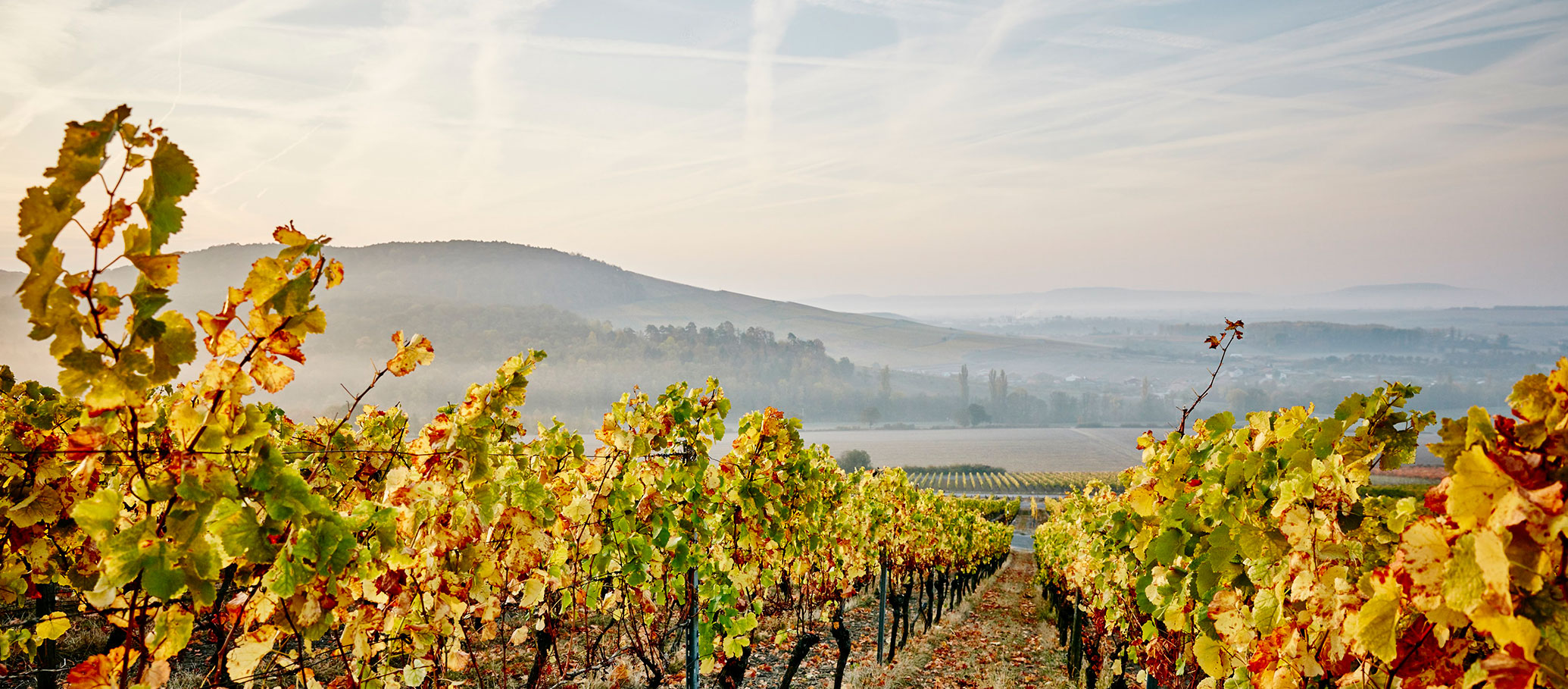Franconia is lovable and has many faces.
Franconia was divided into many small territories in its history, from medieval imperial knighthoods like the Barons of Gemmingen, imperial cities like Rothenburg o.T., to baroque prince-bishoprics like Würzburg and Bamberg, to influential cosmopolitan cities like Nuremberg.
Today, the region benefits from many successful medium-sized businesses, its central location in the heart of Europe and its rich cultural landscape. However, the wine still plays a unique role here. There is evidence of wine growing since the 8th century, and in the Middle Ages, Franconia was even the largest wine-growing region in Europe with 40,000 hectares. We classify Franconian wine mainly according to the rock on which it grows: Buntsandstein in the west near Bürgstadt and Klingenberg, Muschelkalk in the Main region around Würzburg and Gipskeuper in the eastern Steigerwald. Mostly the Francoinians themselves drunk the Franconian wines.
That is why the wines rarely appeared on the world’s major wine lists. The term “Franconian dry”, fully fermented without any tangible sweetness, is a quality issue of Franconian wines. The soils and the mild climate ensure the wines not tasting sour. It is worth experiencing the diversity of Franconia in its landscape, its architecture and its wines. The wine region is excellently developed for tourism. The many wine festivals and cultural highlights, such as the Mozart Festival in Würzburg, attract thousands of short-term travellers every year. Of course, in addition to wine and culture, excellent Franconian cuisine is also a reason to visit Franconia. Famous are bratwursts, fried or as “Blaue Zipfel”, a must is the tender “Schäufele” with its crispy crust or Aischgründer Karpfen, which may only bear this name at a certain age and weight category. Many restaurants have put a modern spin on traditional recipes and cook with regional ingredients. You can feast your way through Franconia.

